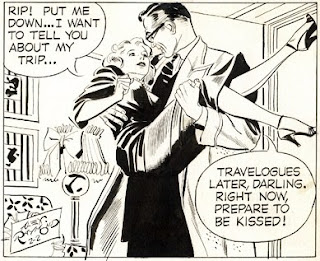One of America's most influential comic strip and illustration artists, Alexander Gillespie Raymond is celebrated for his outstanding work on his Flash Gordon, Jungle Jim, Secret Agent X-9 and Rip Kirby for King Features Syndicate. Raymond is hailed by all as "an artist's artist," and his much-imitated, but seldom equaled style provided a legacy that would inspire artists for generations to come. Here is his brief biography published by the NCS...He worked with Chic and Lyman Young for a while and then in 1934, the late Joe Connolly, president of King Features Syndicate, gave Raymond an idea for a Sunday page in color based on fantastic adventures similar to those of Jules Verne. This was Flash Gordon, the famed adventure feature. "I also did Jungle Jim as a top to the Gordon panel," Alex says, "and for about a year and a half I did Secret Agent X-9, but the strain grew too much and I dropped the later work." Comfortably settled as one of the nation's leading newspaper artists, Alex came to a crisis in his career: whether to remain a topflight cartoonist, or to go in for magazine illustration, for which he had shown a definite flair. He fiddled around with the latter medium, but after several years deliberation, made up his mind. "I decided honestly," he said, "that comic-art work is an art form in itself, it reflects the life and times more accurately and actually is more artistic than magazine illustration -- since it is entirely creative."









